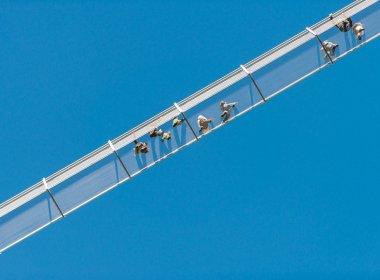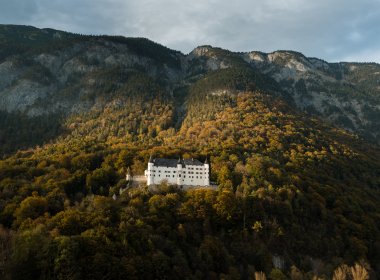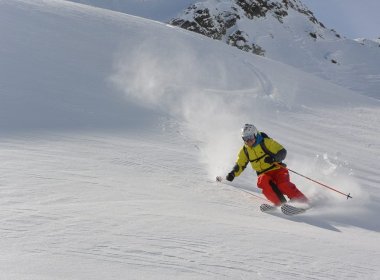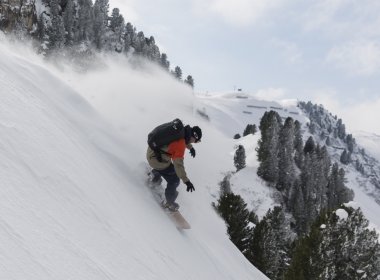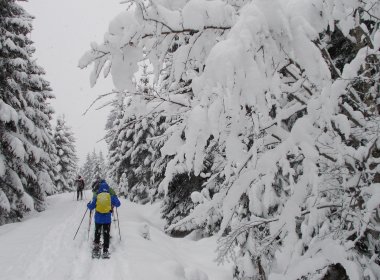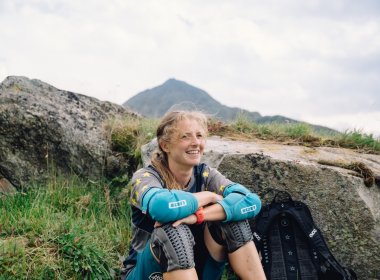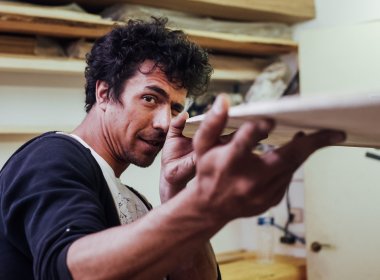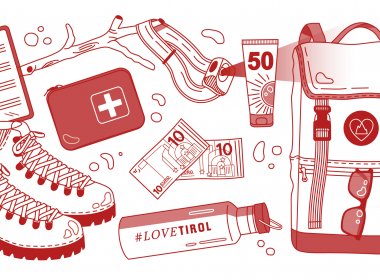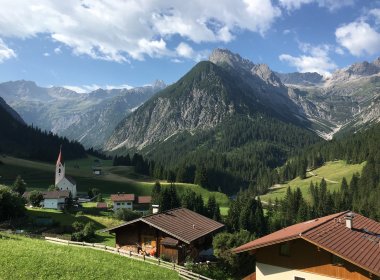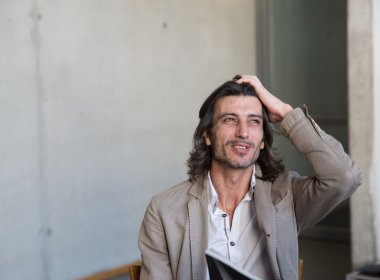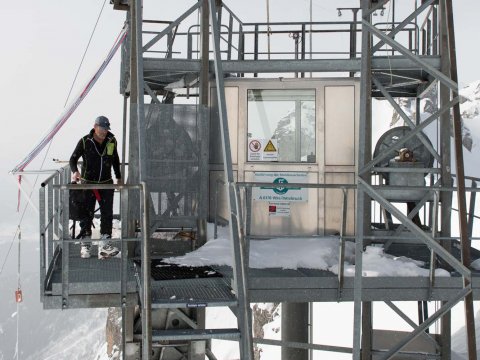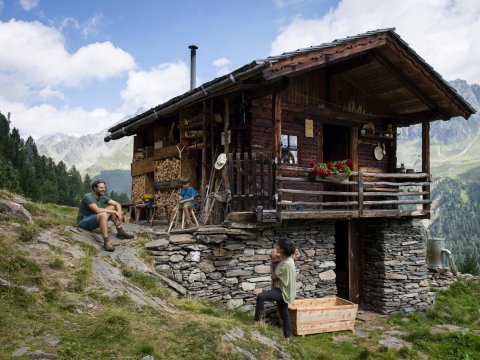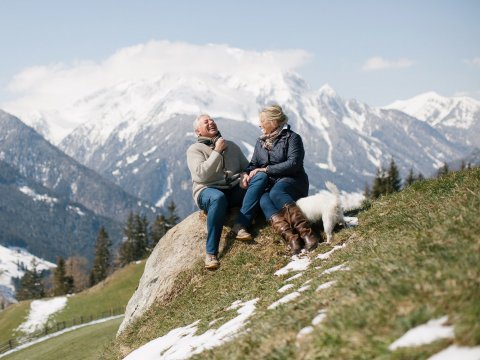Summit Stories: Sigi Hatzer, Großvenediger
An occasional wind blows icy snow crystals through the air and into my face. It is 23 August 2016. Which is actually summer on this side of the equator, but only down in the valley. Sigi Hatzer, our mountain guide, gets out his ski goggles. His ten-year-old son, Lorenz, is already wearing his goggles and goes on ahead. The rope is kept reasonably tight, and I am struck by the majesty of endless blue-tinged crevasses here at an elevation of more than 3,000 metres. It’s a few hundred vertical metres more to go until we reach the summit of the Großvenediger.
It was a good decision to climb the mountain today. Yesterday, when the weather was bad, a climber from the Netherlands fell into a crevasse. Sigi points to the left with his three-metre-long wooden pole: “That is where it happened”. Sigi knows the dangers that lurk on the way up to the top of the Großvenediger mountain. After all, he has been up here 936 or 937 times. He's not quite sure, he tells me, but he keeps a meticulous record of all his mountain adventures so he can easily check when get back to the valley.
A shepherd turned mountain guide
Sigi Hatzer was born and raised in the village of Prägraten in East Tirol. it is a small settlement at the foot of Austria’s fourth-highest mountain, the Großvenediger. When I started investigating about this majestic mountain, I soon stumbled upon Sigi. he was 16 years old when he climbed it for the first time, hiking with friends. That seems incredibly young to me, but he tells me that for the local boys it was actually "quite late". "Nowadays," he adds, "children start climbing a lot earlier. The reason for his somewhat delayed climbing career was that he spent most of his summers looking after his father’s cows in the mountains – from the first until the last day of the school holidays. Aged 16 he finally found time to climb the mountain which he had spent his whole life gazing up at: the Großvenediger. At the age of 17, Sigi travelled to France and climbed Mont Blanc.
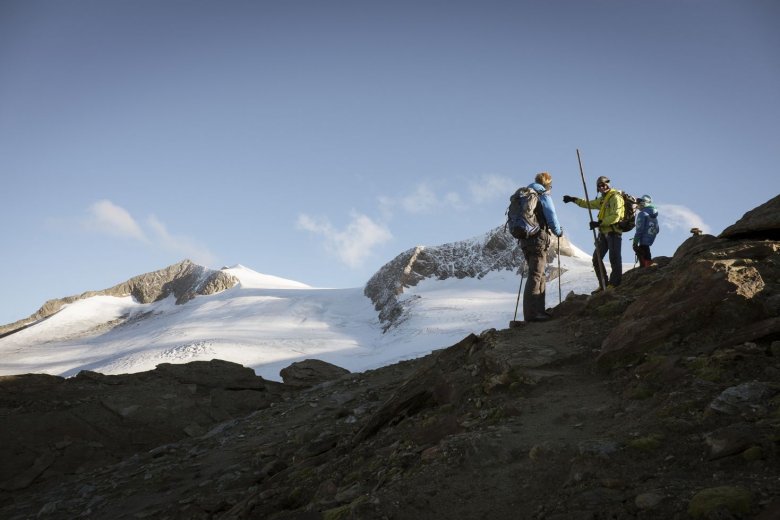
A few metres ahead, a ten-year-old trudges through the ice and snow of the heavily crevassed Inner Mullwitzkees glacier. “Lori, you go ahead,” Sigi says at the start of our adventure. He wears a rope around his waist which is also tied around Lorenz. A few hundred metres ahead I see an older mountaineer crossing the glacier on his own. “Well, looks as if he is trying to kill himself,” Sigi says with a shrug. He explains us that safe and less foreboding travel on glaciers requires at least three climbers moving roped-up. The aim of roping up like this is that if one falls into a crevasse, there are two left to pull him or her out. Scary stuff, but Sigi seems to know what he’s talking about – and what he’s doing. Since he started his training as a mountain guide in 1985 (which he completed in 1987), he has been taking people to the summit of Großvenediger on average 30 times a year. There are some years which are busier, others which are quiter. He has also set up a high-rope forest adventure park in the Virgental Valley together with his wife.
Swallowed by a mountain
“Go to the right of the other tracks – the snow bridge is a better there," he tells me. Mighty hollows are often found beneath these snow bridges. Sigi uses his long wooden pole, known as an “Alpenstock”, to sound for hidden crevasses. The baton vanishes into the snow, two metres deep. “There is a crevasse that runs parallel to the route.” Only the colour of the snow, which is slightly brighter here, indicates there is a hollow space underneath. Many of these cracks and crevices in the ice are up to 30 metres deep – some are as much as 60 metres in depth. Which means that the entire Bergisel Ski Jump in Innsbruck, rising 50 metres from bottom to top, would vanish in a crevasse. Our approach across the Inner Mullwitzkees glacier is dotted with over 40 crevasses. “Now, with all the fresh snow, it’s hard to see them. You only feel them when you fall into one.” Poor visibility in combination with unexperienced climbers makes glacier climbing so dangerous – illustrated by the incident with the Dutch group of climbers the day before. Sigi often hears that these days the Großvenediger is a “well-trodden path”, but that doesn’t mean it’s easy – or safe. There are times, when it takes Sigi and his fellow mountain guides two or three days to sound all crevasses in order to find a safe route to the summit. Apart from the rope, the alpenstock adds a further degree of safety to Sigi’s glacier crossings. In case of a fall, the pole gets stuck – and has many times saved Sigi from falling into a crevasse.
We continue climbing the snow, which covers the glacier’s ice. There has been some snowfall during the last few days, which makes it perfect for glacier travel. Sigi keeps talking to his son Lorenz. “Are you cold, Lori?” We stop for a rest, Sigi offers Lorenz something to drink. “Drink even when you don’t feel like it, that’s really important.” Lorenz doesn’t say a lot, but he is smiling. It’s his second time climbing the Großvenediger. He first conquered its summit two years ago, which Sigi proudly admits was one of his best experiences on this mountain he calls home.
Borders – and borderline experiences
There were times when climbing mountains was the most important thing in Sigi’s life –even more important than his family. He has climbed the Großvenediger from all sides: along the Southwest Route, along the Northeast Route. Once, an ice ledge broke just below him and his fellow climber. They were not roped up. “Roping up would have taken too much time. Then, the ice avalanche would have swept us away. Thank God our gut instinct saved us. We were lucky.”
Eleven years ago there was a day when Sigi even reached the top of the Großvenediger twice ine one day. He had taken part in a few ski touring races and mountain running events, so he had the idea of conquering the Großvenediger twice in a row. On skis. “It is a lot of climbing, so it's tough even for fit mountaineers,” he remembers. On his first attempt, he reached the summit from Hinterbichl in Virgental Valley in 3 hours and 23 minutes. On the second attempt, he took only three minutes longer. In total he did a 70-kilometer round trip with 4,500 vertical metres of uphill in 8 hours and 30 minutes. “Of course, this was a highlight in the true sense of the word. It's something I still think back on today.”
An S-shaped ridge crest appears and we get our first glimpse of the summit cross on the top of the Großvenediger. A fall here could easily be fatal, so it’s good to be clipped to my harness with a carabiner. Behind us looms the 3,560-metre-high peak of Rainerhorn. It is just 100 metres smaller than the Großvenediger, but somehow much less imposing – especially when seen from Virgental Valley. The first recorded ascent of the Großvenedigerwas in 1841, four decades after Austria’s tallest mountain, Großglockner, had been conquered for the first time. No one knows the exact height of the peak. “We still use the same stamp we used 30 years ago. Each of our clients gets one after his or her tour. The stamp says 3,674 metres, so I guess that is what we go with,” says Sigi.
Sigi estimates that the peak of Großvenediger is 3,660 to 3,662 meters tall, depending on snow cover. It’s two to three meters higher in the winter than in the summer. “The rock will soon appear at its highest point, so we can tell more exactly.” Some say that Großvenediger is not actually a Tirolean mountain due to the fact that its peak straddles the border connecting Tirol to the neighbouring province of Salzburg. Does it matter? Not to Sigi. “What is important is that it is there – and that you are there to experience the grandeur of the mountain.”
Father and son on the top
We reach the summit. Getting to the top is a cause for celebration, and we are greeted by a swarm of people buzzing with excitement after having made the rigorous climb across the glacier. We enjoy the atmosphere and savour the view. A rare solar halo dazzles in the sky. This rainbow makes a perfect circle around the sun and is also known as a sundog or ice bow. I remember Sigi’s words spoken at the lodge on the eve of our tour: “It could always be different. We should always bear that in mind.” Saying so, he didn’t only mean the weather. Sigi gives his son a hug and raises a tiny, red flag with some words written on it in felt tip.
He doesn’t understand people who push their kids atop peaks at an early age, at just six or seven years. They do it “out of pure egotism,” Sigi told me before we started our tour. His son was raised in the mountains. What’s normal to Sigi and Lorenz, the mountain people, might be extreme for those who have grown up in a different place.
We descend back down to the valley. I want to know how this mountain has changed – and shaped – him. I ask Sigi. “I appreciate it much more than earlier that I am allowed to climb this mountain. That I am there to experience its grandeur. I am not trying to ‘conquer’ it.” Over the time, he has developed a deep respect for the Großvenediger, adds Sigi. “We have become sort of good friends.”
Großglockner, Wildspitze, Großvenediger, Wilder Kaiser, Olperer – we tell the stories of five mountain guides in Tirol and the mountains that have shaped them.










